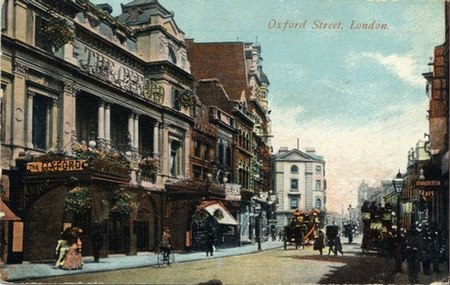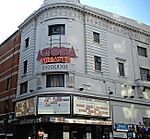Oxford Music Hall
1861 establishments in England1926 disestablishments in EnglandBuildings and structures demolished in 1926Demolished theatres in LondonEntertainment in London ... and 3 more
Former buildings and structures in the City of WestminsterFormer music hall venues in the United KingdomMusic venues completed in 1861

Oxford Music Hall was a music hall located in Westminster, London at the corner of Oxford Street and Tottenham Court Road. It was established on the site of a former public house, the Boar and Castle, by Charles Morton, in 1861. In 1917 the music hall was converted into a legitimate theatre, and in 1921 it was renamed the New Oxford Theatre. In May 1926 it closed and was demolished. The site was occupied by the first Virgin Megastore from 1979 and closed in 2009. In September 2012 a branch of the budget fashion retailer Primark opened on the site.
Excerpt from the Wikipedia article Oxford Music Hall (License: CC BY-SA 3.0, Authors, Images).Oxford Music Hall
Falconberg Mews, London Soho
Geographical coordinates (GPS) Address Nearby Places Show on map
Geographical coordinates (GPS)
| Latitude | Longitude |
|---|---|
| N 51.516 ° | E -0.131 ° |
Address
Falconberg Mews
Falconberg Mews
W1D 2DN London, Soho
England, United Kingdom
Open on Google Maps






